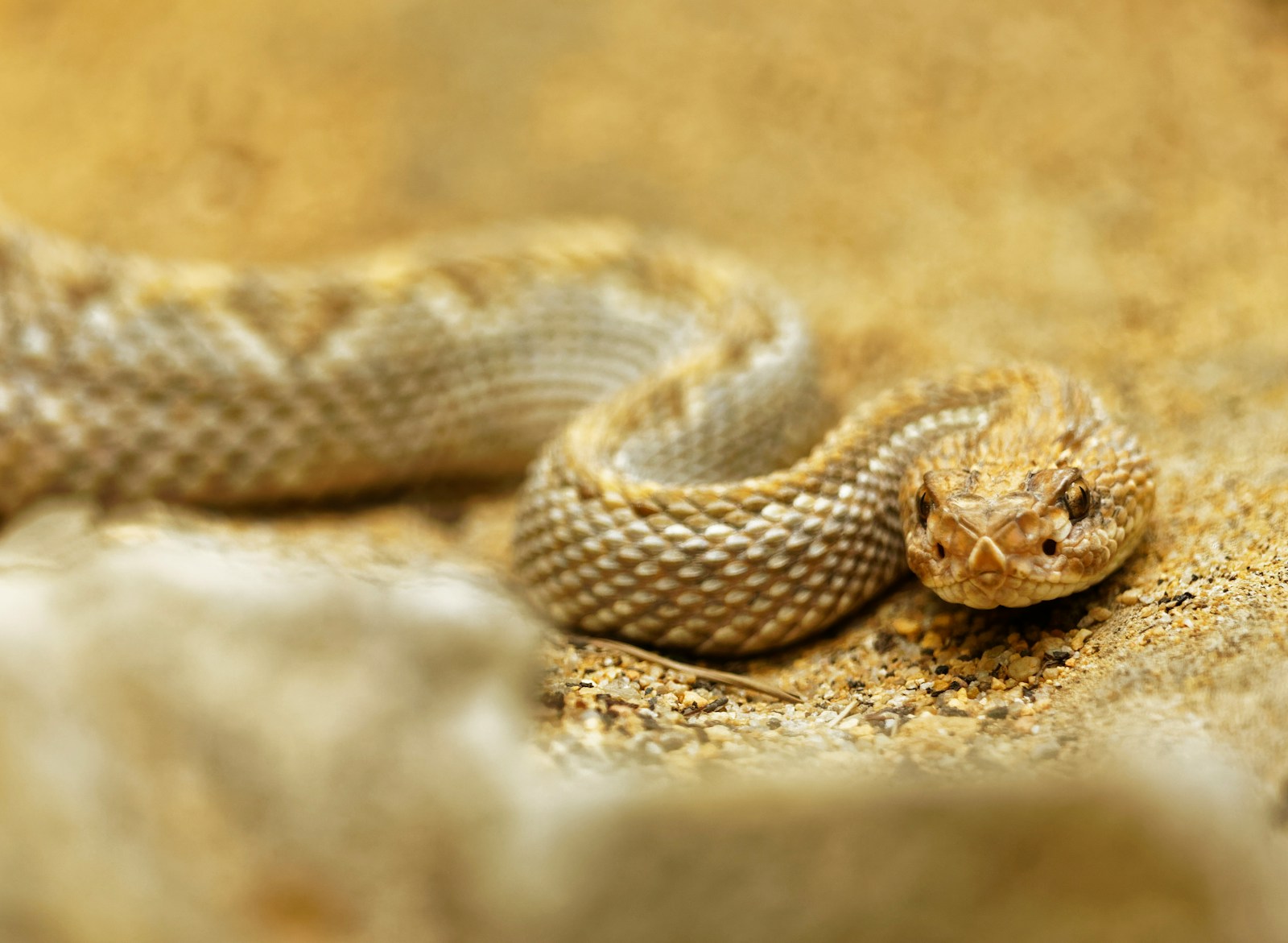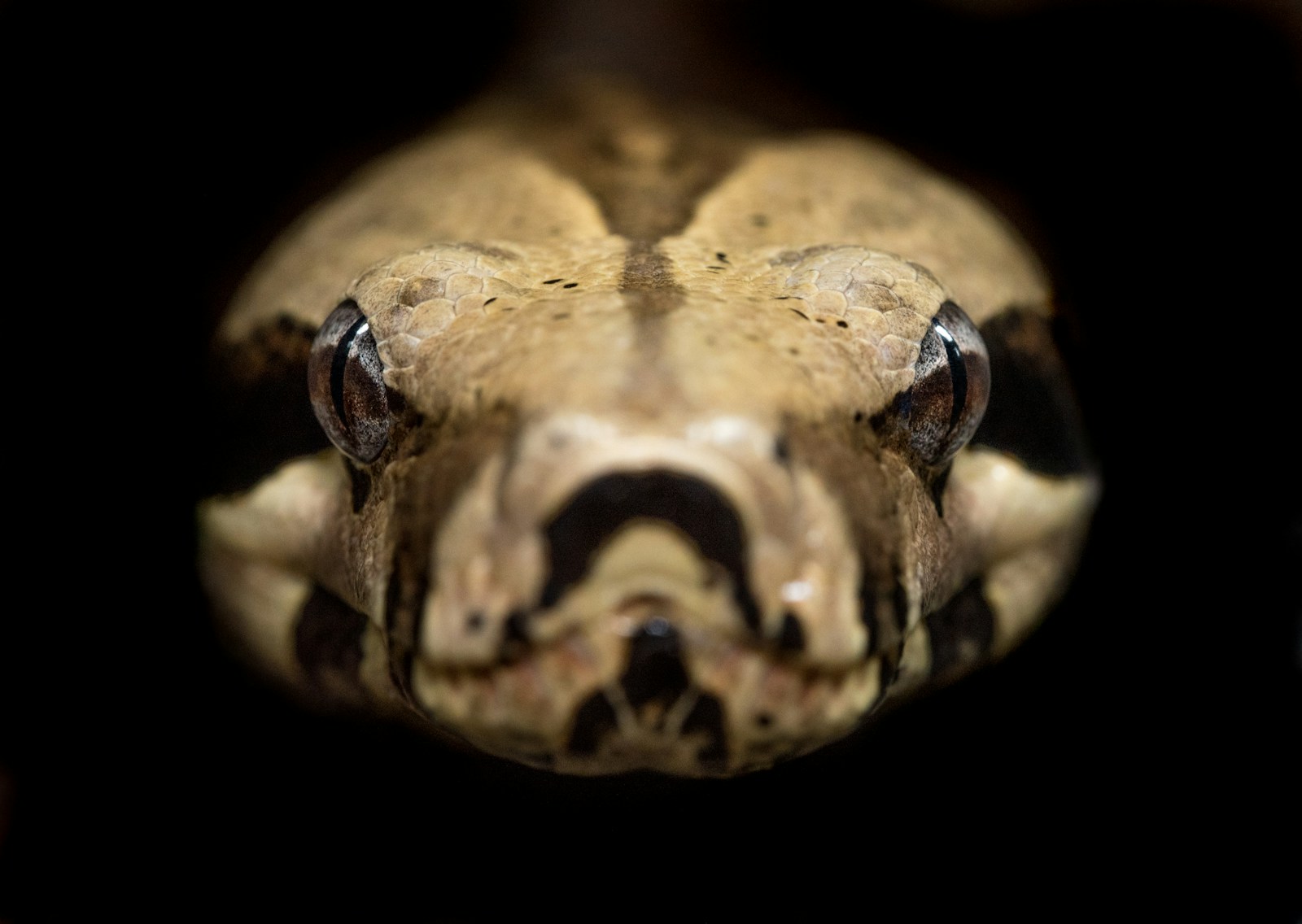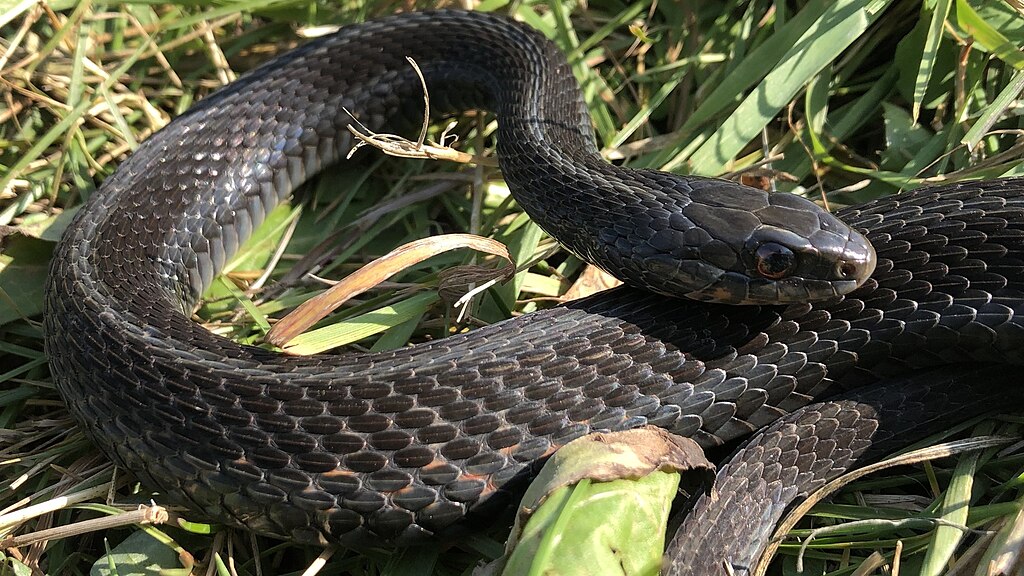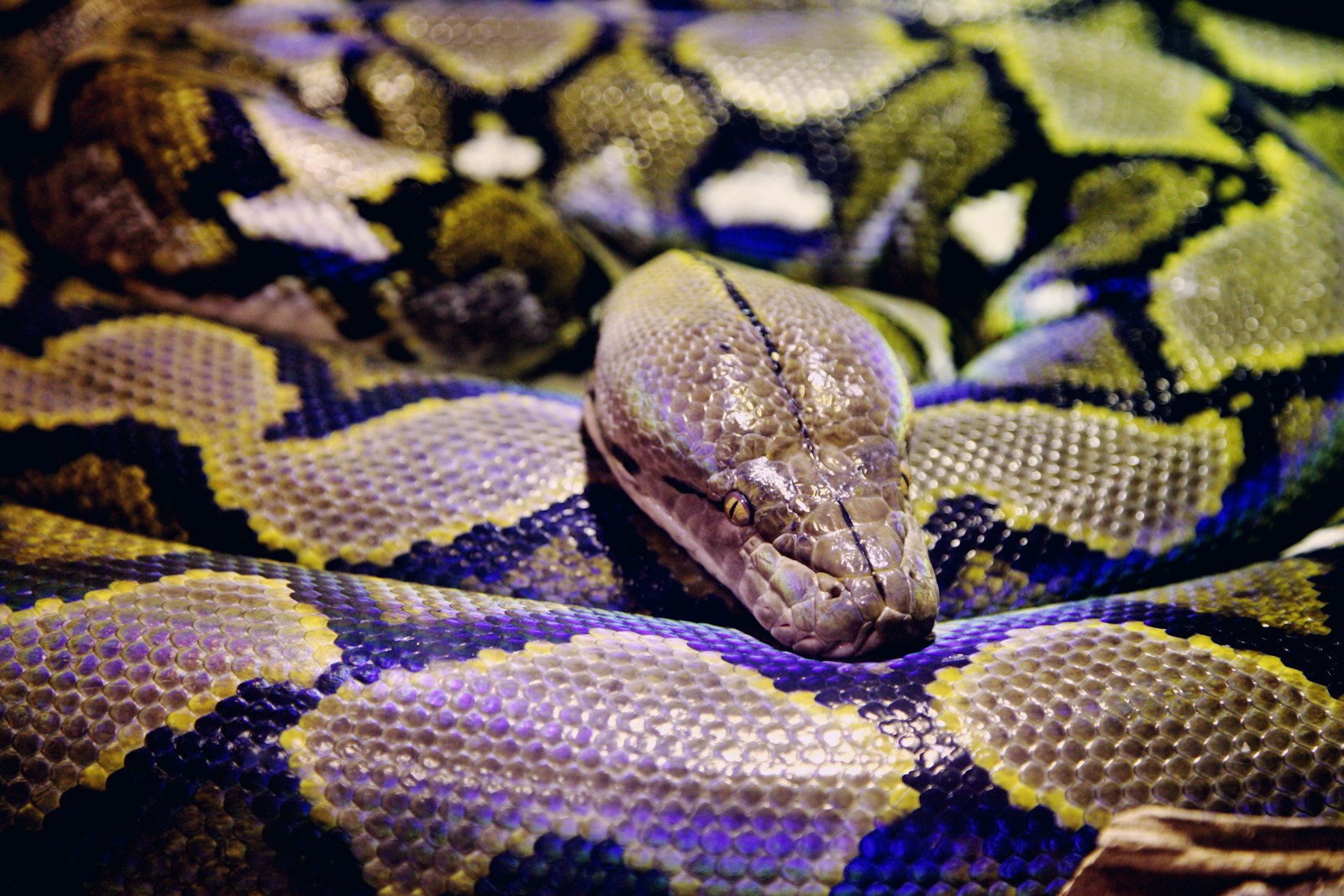While many view snakes as solitary predators slithering through the wilderness alone, nature often defies our simplistic expectations. Several snake species engage in a fascinating behavior that contradicts the loner stereotype – they sleep together in groups. This social sleeping, technically called “aggregation,” serves crucial survival functions and occurs more commonly than many people realize. From the infamous rattlesnakes of North America to various other species worldwide, group sleeping represents an important adaptation that helps these reptiles survive in challenging environments. The reasons behind this behavior reveal sophisticated survival strategies that have evolved over millions of years.
The Surprising Social Nature of Certain Snake Species

Contrary to popular belief, not all snakes are solitary creatures that avoid contact with their own kind. Many species display various levels of social behavior, with group sleeping being one of the most visible manifestations. Garter snakes, rattlesnakes, and certain python species are known to form sleeping aggregations under specific circumstances. These groupings can range from a handful of individuals to massive balls containing hundreds of snakes intertwined together. Scientists have observed that these social interactions often follow seasonal patterns and become particularly pronounced during specific life stages. The degree of sociality varies significantly between species, with some forming only temporary groups while others maintain more consistent social structures.
Thermal Regulation: Staying Warm Together

One of the primary reasons snakes sleep in groups is for thermal regulation, a critical need for these ectothermic (cold-blooded) animals. Unlike mammals, snakes cannot generate their own body heat and must rely on external sources to maintain optimal temperatures. By coiling together in groups, snakes reduce the total surface area exposed to the cold, effectively creating a collective thermal mass that retains heat more efficiently. This behavior is especially evident in colder climates or during winter months when ambient temperatures drop dangerously low. Research has shown that snakes in the center of these aggregations can maintain body temperatures several degrees higher than they could achieve individually, potentially making the difference between survival and death during harsh weather conditions.
Protection Against Predators

Grouping together offers snakes significant protection against potential predators through various mechanisms. The “safety in numbers” principle applies strongly, as predators may be deterred by the sight of multiple snakes together, especially venomous species. Additionally, being part of a group reduces each individual snake’s chances of being the one singled out by a predator. For some species, like certain vipers, group sleeping creates confusion for predators who struggle to distinguish individual targets within a writhing mass of serpents. Studies have documented lower predation rates for snakes that engage in group sleeping compared to solitary sleepers of the same species in similar habitats. This defensive advantage has been a powerful evolutionary driver maintaining aggregation behaviors across different snake lineages.
Brumation: Communal Winter Survival

Brumation, the reptilian equivalent of hibernation, represents a critical period when group sleeping becomes essential for many snake species. During the cold winter months, snakes enter a state of drastically reduced metabolism and activity, seeking out protected locations called hibernacula where they can safely weather the harsh conditions. These hibernacula often hold dozens or even hundreds of snakes grouped together in underground dens, rock crevices, or abandoned animal burrows. The collective body heat and shared protection of these sites significantly increase winter survival rates. Research monitoring tagged snakes has revealed that individuals regularly return to the same hibernacula year after year, suggesting these locations and the social groupings they enable have deep importance in snake life cycles.
The Famous Garter Snake Aggregations

Common garter snakes (Thamnophis sirtalis) demonstrate some of the most spectacular snake aggregation behaviors in the animal kingdom. In certain northern regions like Manitoba, Canada, tens of thousands of these small snakes converge on communal dens called hibernacula each autumn. These massive aggregations serve to protect the snakes from freezing temperatures during the harsh winter months. When spring arrives, the emergence of these enormous snake balls has become a notable wildlife spectacle, drawing researchers and nature enthusiasts alike. Interestingly, female garter snakes produce pheromones that help guide others to the hibernaculum, demonstrating a sophisticated chemical communication system that facilitates these life-saving gatherings. The Narcisse Snake Dens in Manitoba represent one of the largest concentrations of snakes anywhere on Earth, with an estimated 70,000+ garter snakes congregating annually.
Timber Rattlesnake Den Communities

Timber rattlesnakes (Crotalus horridus) provide another striking example of communal sleeping behavior with important survival implications. These venomous pit vipers form winter denning aggregations in rocky outcroppings and talus slopes across their range in eastern North America. A single den may house dozens of rattlesnakes, with individuals traveling several miles from their summer hunting grounds to return to the same communal site each year. Radio tracking studies have revealed that these snakes develop precise mental maps of their territory and migration routes, demonstrating complex spatial memory capabilities. Interestingly, timber rattlesnake dens often contain multiple generations of related snakes, suggesting these communal sites have cultural significance passed down through generations of serpents.
Reproductive Advantages of Group Sleeping

Beyond temperature regulation and predator defense, snake aggregations often serve important reproductive functions. For many species, these gatherings create efficient mating opportunities where males can locate receptive females without extensive searching. In species like the red-sided garter snake, males will often wait at the entrance of winter dens to intercept females as they emerge in spring, forming what scientists call “mating balls” where dozens of males may surround a single female. These intense reproductive gatherings ensure genetic diversity while reducing the energy costs and predation risks associated with extended mate-seeking behavior. Additionally, pregnant female snakes in some species will join aggregations to benefit from optimal temperature conditions for embryonic development, essentially using the group as an external incubation system.
Chemical Communication Facilitates Group Formation

The formation and maintenance of snake sleeping groups rely heavily on sophisticated chemical communication systems. Snakes possess a highly developed vomeronasal system that allows them to detect and interpret pheromones and other chemical cues in their environment. Studies have identified specific pheromone compounds that guide snakes to aggregation sites and help them recognize members of their own species or even family groups. This chemical signaling enables snakes to locate hibernacula and sleeping sites even when visual cues are limited. Research on prairie rattlesnakes has shown that individuals can follow the chemical trails left by other snakes that have already located suitable den sites, creating a form of indirect social learning. This chemical communication network represents one of the most important mechanisms enabling the complex social behaviors observed in group-sleeping snake species.
Kinship and Social Recognition

Contrary to the notion that snakes are simple creatures with minimal social awareness, evidence suggests that kinship and social recognition play important roles in their aggregation behaviors. Several studies on rattlesnakes and garter snakes have demonstrated that these reptiles can distinguish between familiar and unfamiliar individuals, and some may preferentially associate with relatives. This capability enables the formation of loosely structured social groups that persist across multiple seasons. In timber rattlesnakes, for example, related females often bask together and may coordinate birthing at communal sites where conditions are optimal for newborns. This level of social discrimination indicates cognitive abilities far more sophisticated than previously attributed to snakes. These findings have prompted researchers to reconsider traditional views about reptilian social capabilities and recognize that snake societies may involve complex dynamics previously overlooked.
Environmental Factors Influencing Group Sleeping

The tendency for snakes to sleep in groups varies dramatically based on environmental conditions and habitat characteristics. Geographic location plays a major role, with northern populations of many species showing much stronger aggregation behaviors than their southern counterparts who face less thermal stress. The availability of suitable denning sites also strongly influences group formation, with limited den availability in some regions forcing greater numbers of snakes to share the few adequate locations. Seasonal weather patterns, particularly the severity and duration of winter, directly impact both the timing and size of snake aggregations. Climate change researchers have begun documenting shifts in snake aggregation behaviors, with some populations showing altered timing of den entry and emergence as winters become milder in certain regions. These observations highlight how snake social behaviors are not fixed traits but flexible responses to environmental pressures.
Disease Risks in Snake Aggregations

While group sleeping offers numerous advantages, it also creates potential health risks through increased disease transmission opportunities. Close physical contact between numerous individuals facilitates the spread of parasites, bacterial infections, and fungal diseases like snake fungal disease (SFD), which has emerged as a significant threat to some North American snake populations. These disease risks represent a natural counterbalance to the benefits of aggregation, creating evolutionary pressure for snakes to develop resistance mechanisms. Some researchers have proposed that certain skin bacteria or secretions in social snake species may have antimicrobial properties that help mitigate infection risks in group contexts. The tradeoff between thermal benefits and disease exposure likely influences the optimal group size for different species under various environmental conditions, creating a complex cost-benefit equation that shapes aggregation behaviors.
Conservation Implications of Communal Behavior

The tendency for some snake species to gather in large groups creates both unique vulnerabilities and conservation opportunities. Hibernacula sites where hundreds or thousands of snakes congregate become critical conservation priorities, as damage to a single den could impact entire regional populations. Human activities like quarrying, road construction, and urban development have destroyed many traditional den sites, forcing snakes to seek less suitable alternatives with higher mortality rates. On the positive side, the predictable nature of these aggregations allows conservationists to implement targeted protection measures like seasonal road closures near known den sites to prevent mass casualties during migration periods. Conservation programs focusing on educating landowners about the importance of preserving den sites have proven successful in some regions, highlighting how understanding snake social behaviors directly informs effective protection strategies.
Evolving Scientific Understanding of Snake Sociality

Scientific perspectives on snake social behavior have undergone significant evolution in recent decades, challenging long-held assumptions about reptilian sociality. Early herpetologists often dismissed snake aggregations as simple responses to limited resources rather than true social behavior. Modern research employing technologies like radio telemetry, genetic analysis, and thermal imaging has revealed much more complex social dynamics than previously recognized. Studies documenting non-random association patterns, recognition abilities, and coordinated behaviors have forced a reevaluation of snake cognitive and social capabilities. This shifting scientific understanding mirrors similar revelations about social complexity in other supposedly “simple” animals like fish and insects. As research tools become more sophisticated, our understanding of snake social lives continues to deepen, suggesting that these ancient reptiles possess social repertoires far richer than historical stereotypes suggested.
From thermal advantages to predator protection, reproductive opportunities to traditional denning sites, the reasons snakes gather to sleep reveal sophisticated adaptations that have developed over millions of years of evolution. These behaviors challenge our perception of snakes as purely solitary creatures and highlight the complex ecological strategies these animals employ to survive. By understanding the social dimensions of snake behavior, we gain not only scientific insight but also important knowledge for conservation efforts aimed at protecting these often misunderstood reptiles. As climate change and habitat destruction increasingly threaten traditional snake aggregation sites, recognizing and preserving these important locations becomes crucial for ensuring the continued survival of these remarkable social adaptations.





